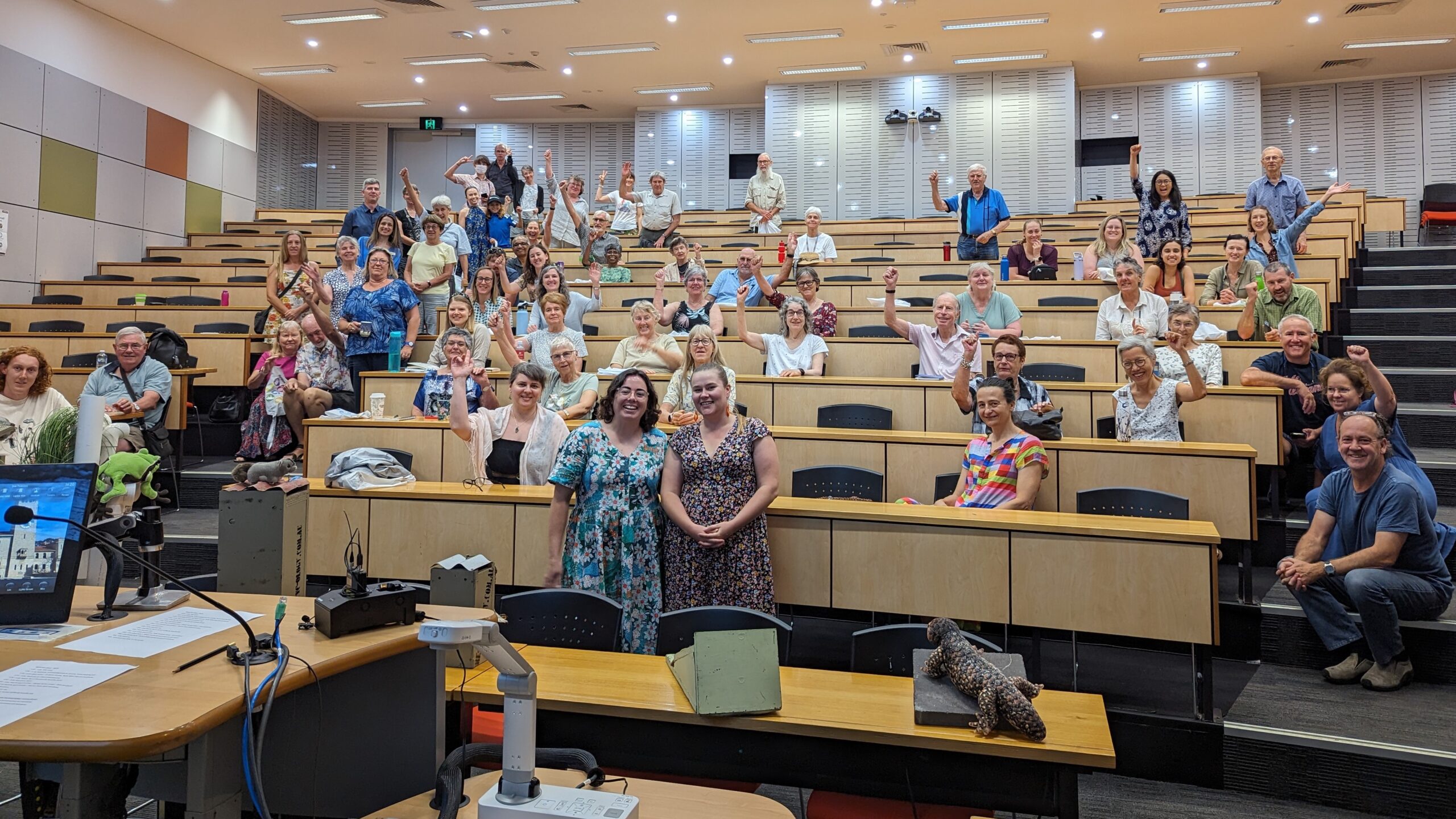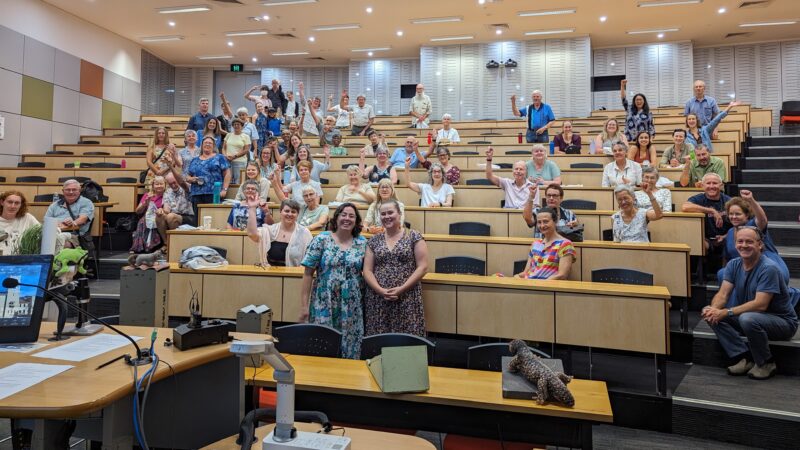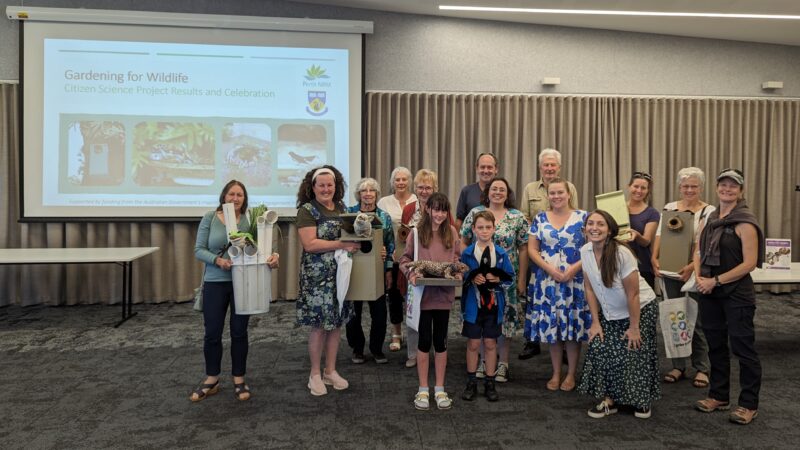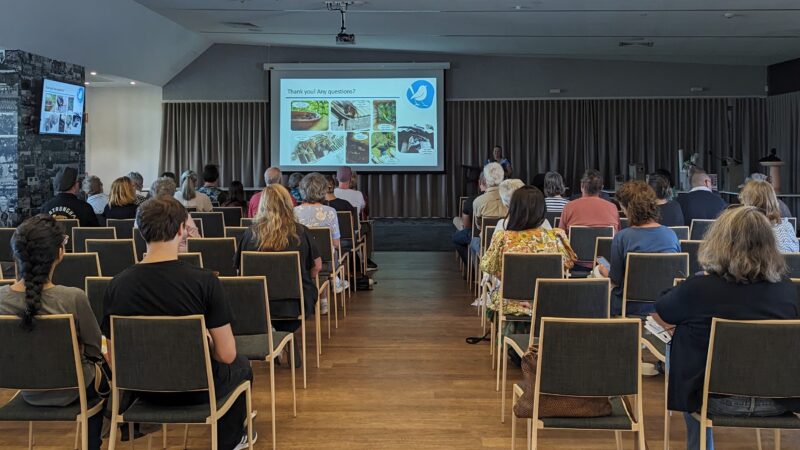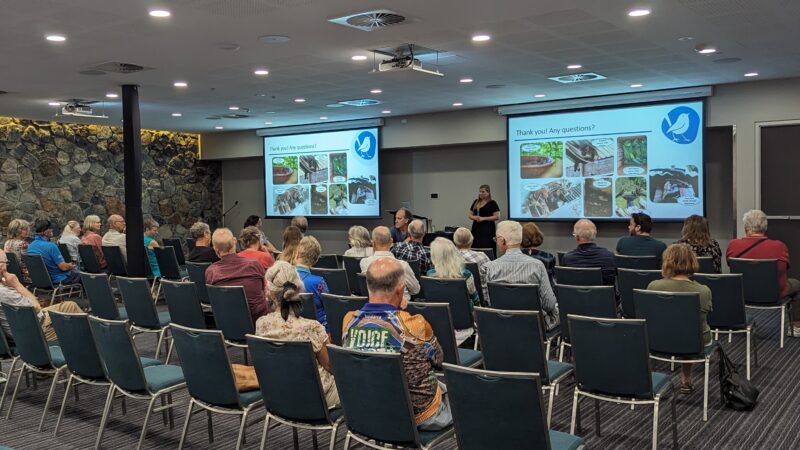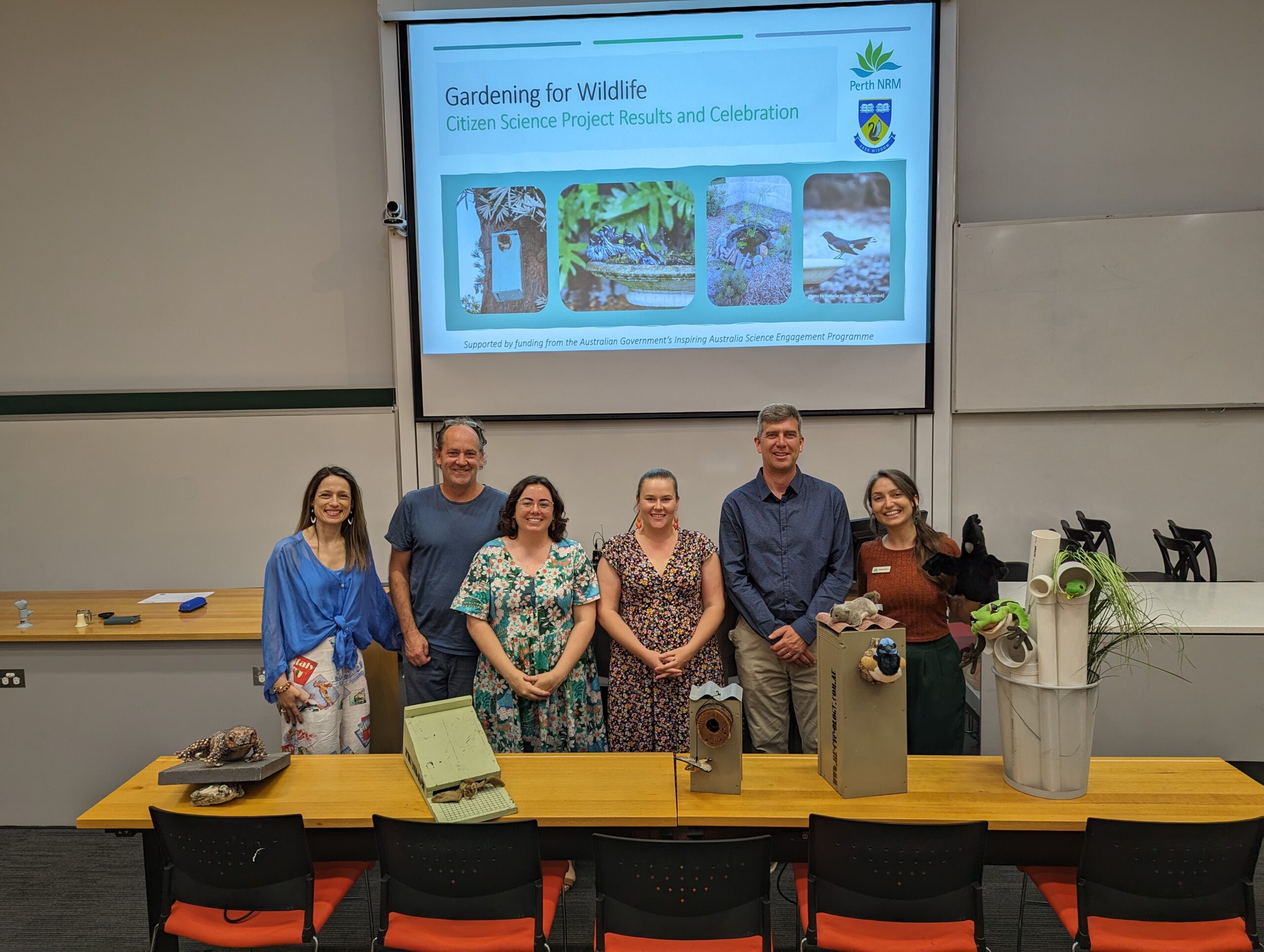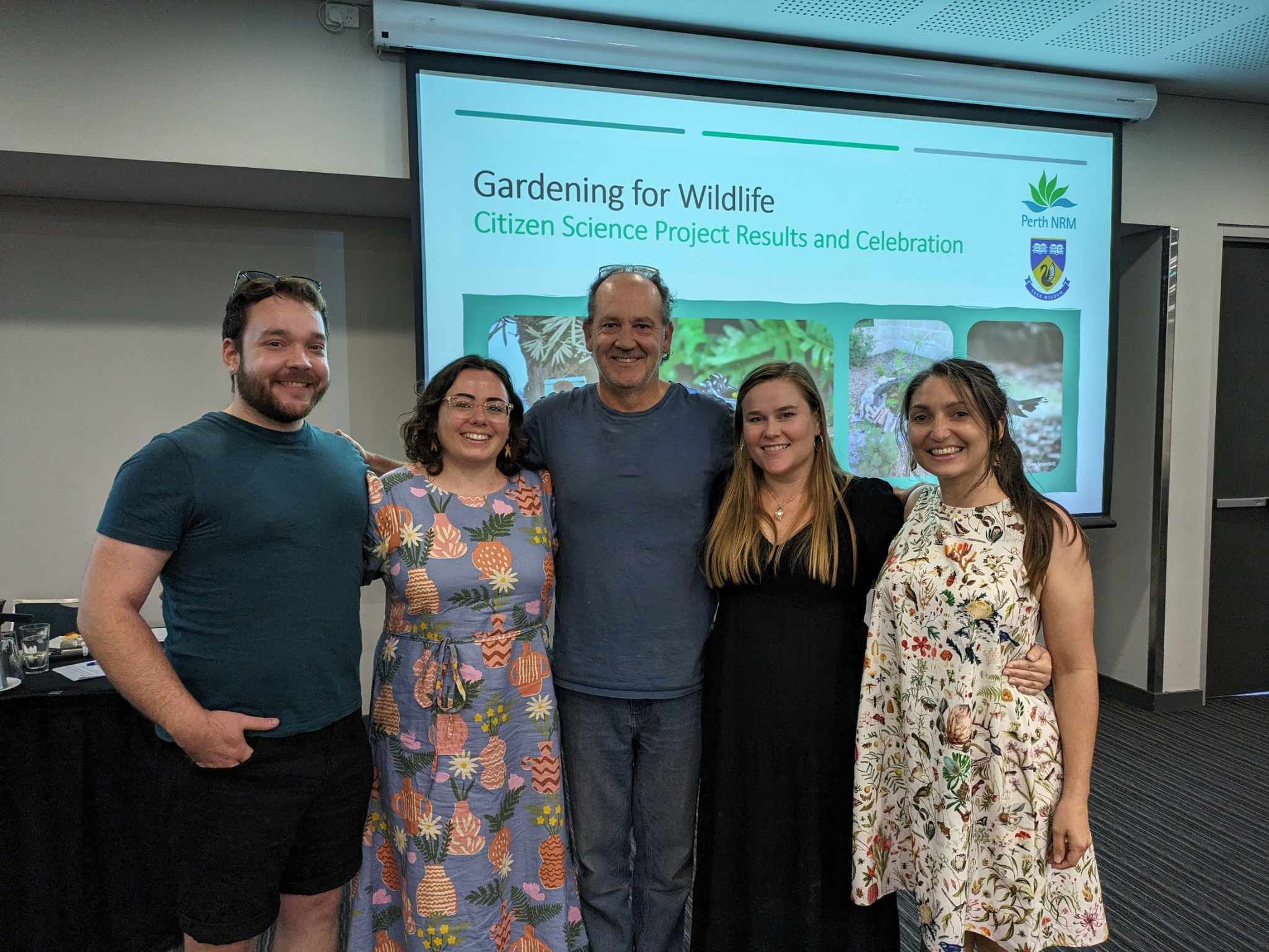We can now share the final outcomes of the Turning Gardeners into Conservationists project!
After 18 months and over 15,000 wildlife surveys completed by more than 240 citizen scientists across southwest Australia, we can now share the final outcomes of the Turning Gardeners into Conservationists project. Scroll on for a summary of the biodiversity and human wellbeing benefits of gardening for wildlife. For the full details of the project’s ecological and sociological research highlights, read our Community Report.
Biodiversity benefits
Citizen scientists detected a remarkable 216 vertebrate species visiting southwest Australian gardens! This included 203 native species of which four are listed threatened species under federal legislation. The New Holland honeyeater, motorbike frog, Buchanan’s snake-eyed skink and common brushtail possum were the most frequently observed bird, frog, reptile and mammal species, respectively.
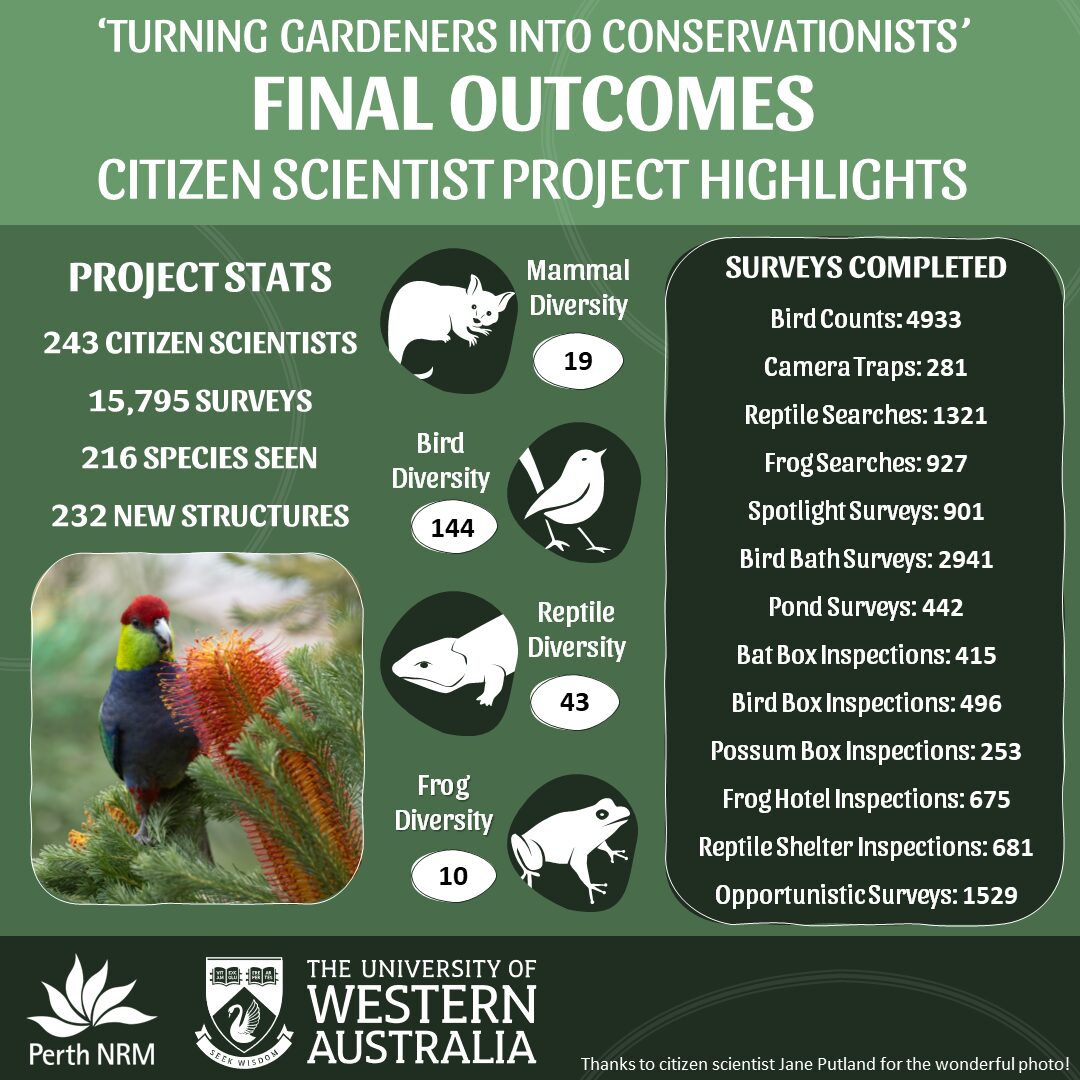
Data collected by citizen scientists also revealed important insights about the benefits of wildlife friendly structures for biodiversity conservation. A total of 77 species used wildlife friendly structures that were already in gardens on project commencement. This included 55 bird species, 4 frog species, 13 reptile species and 5 mammal species. Water sources such as ponds and bird baths were used the most frequently and in addition to reptile shelters, were used by the greatest diversity of wildlife. The finding of chicks or eggs being present in 16% of bird box inspections and tadpoles on 22% of pond surveys provides exciting and valuable evidence of animal reproduction in gardens.
As part of the project, 232 new wildlife friendly structures were installed in citizen scientist’s gardens, including nest boxes, frog hotels, reptile shelters, bird baths and ponds. These structures provide wildlife with valuable shelter and water resources, and monitoring shows that every structure type was used by wildlife in less than a year since their installation.
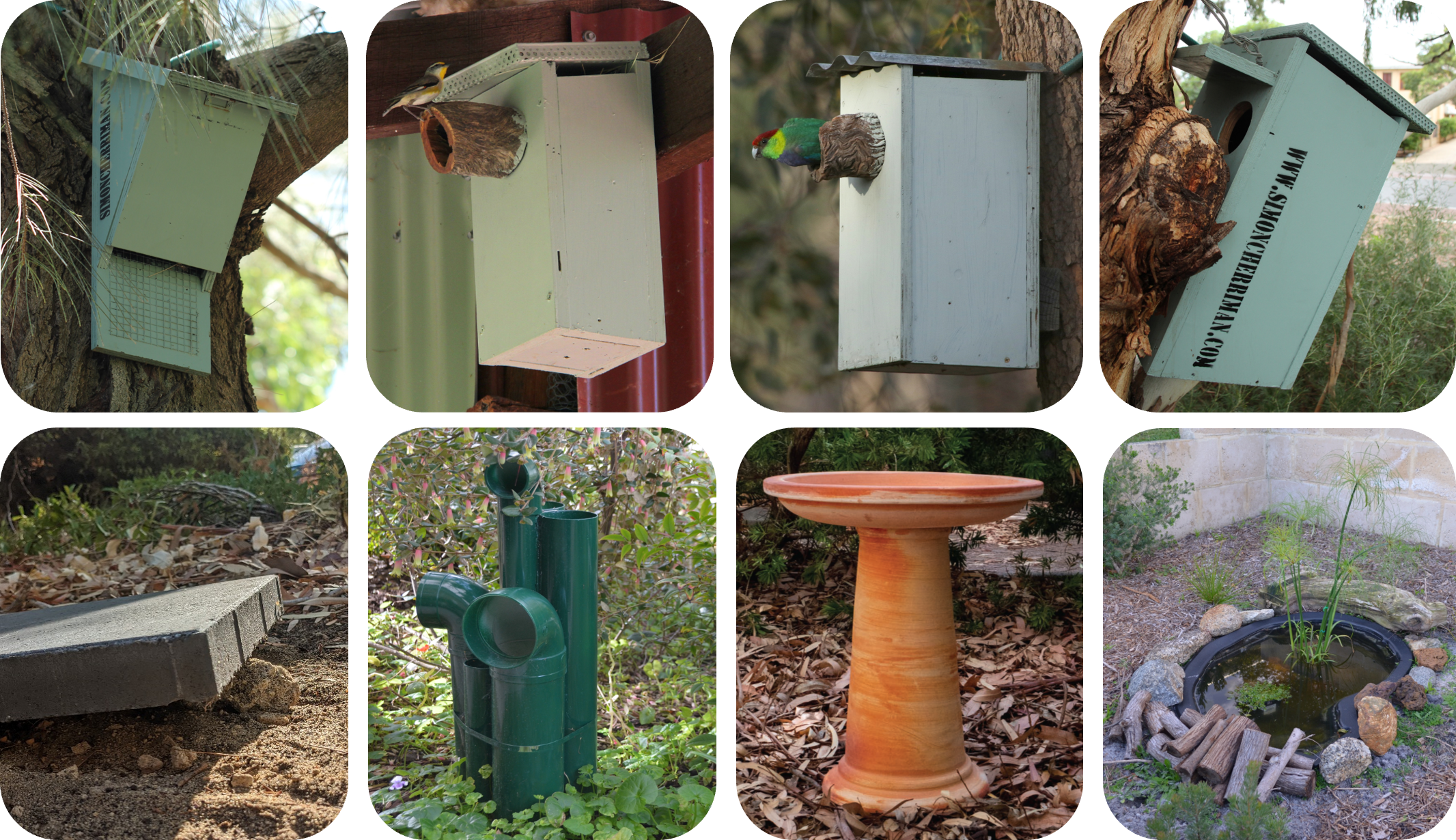
Habitat structure types installed by citizen scientists.
Human wellbeing benefits
Citizen scientists involved in the project also helped us discover some of the benefits of wildlife friendly gardening for human health, wellbeing and connection to nature.
More than 100 citizen scientists took part in health and wellbeing surveys at the beginning, middle and end of the project. These surveys included three well-established metrics: the Short Form Health Survey (SF-36), the Warwick-Edinburgh Mental Wellbeing Scale (WEMWBS), and the Nature Relatedness Scale (NR-6). These surveys revealed that participants had relatively high connection to nature throughout the project, and revealed that the wildlife monitoring group had a slight increasing trend in several health and wellbeing metrics over the course of the project while the control group’s metrics remained stable or declined. This suggests that engaging in wildlife monitoring and wildlife-friendly gardening has positive impacts on human-wellbeing.
To go even more in-depth, twenty citizen scientists also volunteered their time and allowed us to visit their gardens for semi-structured interviews. These interviews included questions about their experiences of wildlife-friendly gardening and wildlife monitoring, and revealed a wide range of positive benefits for emotional, environmental, social, intellectual, physical and spiritual dimensions of human wellbeing.
- Citizen scientists with the project team at the celebration event in Perth.
- Citizen scientists with the project team at the celebration event in Albany.
- Citizen scientists with the project team at the celebration event in Albany.
- Citizen scientists with the project team at the celebration event in Bunbury.
What’s next?
At our final events, we shared some other projects that citizen scientists could get involved in to continue their wildlife-friendly gardening and wildlife monitoring journey, including amazing project and opportunities with BirdLife Australia, the Conservation Council of WA, and FrogID.
As this citizen science project comes to an end, we want to say a massive thank you to all of the citizen scientists who volunteered their time to the project, as well as our scientific steering committee for all their support!
- The project team at the celebration event in Perth, with project partners and supporters. Dr Elena Limnios (Perth NRM Board Chair), Dr Paul Close (UWA), Dr Laura Skates (Perth NRM), Dr Bronte Van Helden (UWA), Dr Owen Nevin (WABSI), Hannah Gulliver (Perth NRM).
- The project team at the celebration event in Bunbury, with project partners and supporters. Jason Pitman, Dr Laura Skates, Dr Paul Close, Dr Bronte Van Helden, and Hannah Gulliver.
Thanks also to our valued project partners:
- Community: Armadale Gosnells Landcare Group, Oyster Harbour Catchment Group, Torbay Catchment Group
- State Government: Department of Biodiversity, Conservation and Attractions – South Coast Region, Department of Biodiversity, Conservation and Attractions – Swan Region
- Local Government: City of Albany, City of Armadale, City of Canning, City of Cockburn, Town of Victoria Park
- Organisations: BirdLife WA, South Coast NRM, South East Regional Centre for Urban Landcare, South West NRM, Western Australian Biodiversity Science Institute
The ‘Turning Gardeners into Conservationists’ project was proudly delivered by UWA Albany and Perth NRM, through funding from the Australian Government’s Inspiring Australia Science Engagement Programme.
Partners
We acknowledge and appreciate the support of all our partners, supporters, funding bodies and sponsors.

